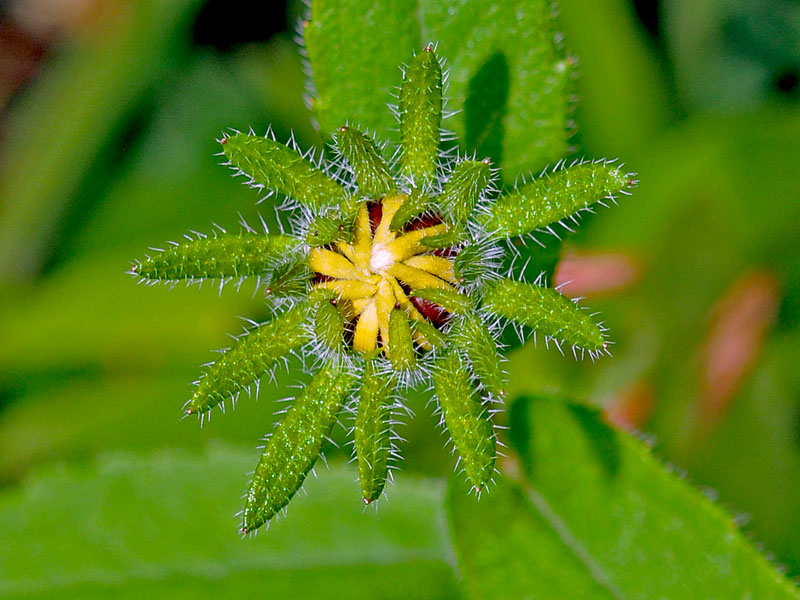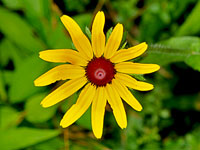
 |
Photos © Kim Hosen; Merrimac Farm Wildlife Management Area, Nokesville, VA; May 2 2009
Text by: Lubna AijazLubna Aijaz |
|
|
Black-eyed Susan
Rudbeckia hirta.
Sunflower family, Asteraceae
Rudbeckia hirta, customarily called black-eyed-susan, is a North American species of flowering plants in the sunflower family that grow over three feet tall. They have green leaves up to six inches long.
They are gorgeous gold beautiful plants and many people include them in their gardens where they bloom from June to October. They are known as pioneer plants (explorers) which means they are one of the first plants to grow in a new field, open woods or garden, and they grow quickly in just about any kind of soil. It usually grows as a biennial, which means it takes two years to bloom from seed.
These cheerful hearty flowers really enjoy the Sun. They prefer full sun, though they'll grow in partial sun. Butterflies, bees, flies, and other insects visit flowers for nectar. When they drink nectar, they unintentionally move pollen from one plant to another. This allows the plant to grow fruits and seeds, which are lightweight and travel by wind.
The genus name for all Black-Eyed Susans is Rudbeckia. It's for the Rudbecks, a very famous Swedish scientist named Olof, known mostly for his accomplishments in medicine (anatomy) and liguistics, and also for studies in music and botany. He established the first botanical garden in Sweden, which was originally called Rudbeck's Garden.
The plant also is a traditional Native American medicinal herb in diverse tribal nations; believed in those cultures to be a remedy, among other things, for colds, flu, infection, swelling and for snake bite. Rudbeckia hirta is also the state flower of Maryland and traditionally symbolizes “Justice” & “Encouragement”.
|
|

